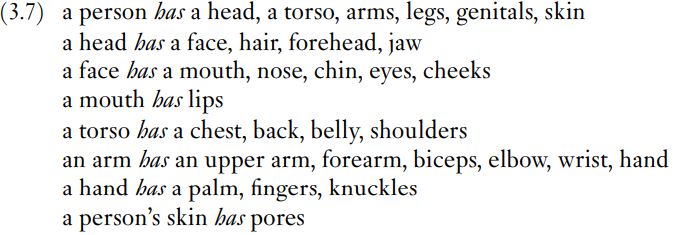

Grammar


Tenses


Present

Present Simple

Present Continuous

Present Perfect

Present Perfect Continuous


Past

Past Simple

Past Continuous

Past Perfect

Past Perfect Continuous


Future

Future Simple

Future Continuous

Future Perfect

Future Perfect Continuous


Parts Of Speech


Nouns

Countable and uncountable nouns

Verbal nouns

Singular and Plural nouns

Proper nouns

Nouns gender

Nouns definition

Concrete nouns

Abstract nouns

Common nouns

Collective nouns

Definition Of Nouns

Animate and Inanimate nouns

Nouns


Verbs

Stative and dynamic verbs

Finite and nonfinite verbs

To be verbs

Transitive and intransitive verbs

Auxiliary verbs

Modal verbs

Regular and irregular verbs

Action verbs

Verbs


Adverbs

Relative adverbs

Interrogative adverbs

Adverbs of time

Adverbs of place

Adverbs of reason

Adverbs of quantity

Adverbs of manner

Adverbs of frequency

Adverbs of affirmation

Adverbs


Adjectives

Quantitative adjective

Proper adjective

Possessive adjective

Numeral adjective

Interrogative adjective

Distributive adjective

Descriptive adjective

Demonstrative adjective


Pronouns

Subject pronoun

Relative pronoun

Reflexive pronoun

Reciprocal pronoun

Possessive pronoun

Personal pronoun

Interrogative pronoun

Indefinite pronoun

Emphatic pronoun

Distributive pronoun

Demonstrative pronoun

Pronouns


Pre Position


Preposition by function

Time preposition

Reason preposition

Possession preposition

Place preposition

Phrases preposition

Origin preposition

Measure preposition

Direction preposition

Contrast preposition

Agent preposition


Preposition by construction

Simple preposition

Phrase preposition

Double preposition

Compound preposition

prepositions


Conjunctions

Subordinating conjunction

Correlative conjunction

Coordinating conjunction

Conjunctive adverbs

conjunctions


Interjections

Express calling interjection

Phrases

Sentences


Grammar Rules

Passive and Active

Preference

Requests and offers

wishes

Be used to

Some and any

Could have done

Describing people

Giving advices

Possession

Comparative and superlative

Giving Reason

Making Suggestions

Apologizing

Forming questions

Since and for

Directions

Obligation

Adverbials

invitation

Articles

Imaginary condition

Zero conditional

First conditional

Second conditional

Third conditional

Reported speech

Demonstratives

Determiners


Linguistics

Phonetics

Phonology

Linguistics fields

Syntax

Morphology

Semantics

pragmatics

History

Writing

Grammar

Phonetics and Phonology

Semiotics


Reading Comprehension

Elementary

Intermediate

Advanced


Teaching Methods

Teaching Strategies

Assessment
Some other parts
المؤلف:
Patrick Griffiths
المصدر:
An Introduction to English Semantics And Pragmatics
الجزء والصفحة:
45-3
12-2-2022
1197
Some other parts
The body is a source of metaphors, for instance lose one’s head, meaning ‘panic’. The has-relation applies between various words denoting body parts. Person is an ambiguous word denoting either a physical person – who can, for instance, be big or ugly – or the psychological individual – who can be kind or silly and so on. The physical person prototypically has a head, has a torso, has arms, has legs, has genitals and has a skin. These parts and some of the parts that they, in turn, prototypically have are set out in (3.7).

It was pointed out that semantic description is different from the compilation of an encyclopedia. Semantics is not an attempt to catalogue all human knowledge. Instead, semanticists aim to describe the knowledge about meaning that language users have simply because they are users of the language. Anatomists, osteopaths, massage practitioners and similar experts have a far more detailed vocabulary for talking about body parts than just the terms in (3.7). It is safe to assume that any competent user of English knows the meanings of the words in (3.7), and the has-relations listed there are the basis for inferences. If you are told that the mountain at Machu Picchu looks like a face, you can expect it to have parts corresponding to a mouth, nose, chin, eyes and cheeks, but, in an ordinary conversation, it would be unreasonable to expect that there should be parts corresponding to everything shown in an anatomy book’s treatment of the face.
For the sake of clarity, I avoided using the word body in (3.7) because body is ambiguous and two of its several different senses could have been used in that example. One sense (and, to keep track of the difference, I’ll call it body1) is synonymous with (physical) person and another sense (body2 for convenience of reference) is synonymous with torso. The first line of (3.7) could have been written as ‘a body1 has a head, a body2, arms, legs, genitals, skin’. Readers who use the word body2 in preference to torso might have liked that better.
A prototype chair has a back, seat and legs. Interestingly the words back and legs are also body part labels. The body part labels head, neck, foot and mouth are used to label parts of a wide range of things: for example, a mountain has a head and foot; lampposts and bottles both have necks; caves and rivers have mouths. Presumably this indicates a human tendency to interpret and label the world by analogy with what we understand most intimately, such as our own bodies.
 الاكثر قراءة في Semantics
الاكثر قراءة في Semantics
 اخر الاخبار
اخر الاخبار
اخبار العتبة العباسية المقدسة

الآخبار الصحية















 قسم الشؤون الفكرية يصدر كتاباً يوثق تاريخ السدانة في العتبة العباسية المقدسة
قسم الشؤون الفكرية يصدر كتاباً يوثق تاريخ السدانة في العتبة العباسية المقدسة "المهمة".. إصدار قصصي يوثّق القصص الفائزة في مسابقة فتوى الدفاع المقدسة للقصة القصيرة
"المهمة".. إصدار قصصي يوثّق القصص الفائزة في مسابقة فتوى الدفاع المقدسة للقصة القصيرة (نوافذ).. إصدار أدبي يوثق القصص الفائزة في مسابقة الإمام العسكري (عليه السلام)
(نوافذ).. إصدار أدبي يوثق القصص الفائزة في مسابقة الإمام العسكري (عليه السلام)


















